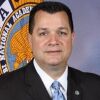How many of you have had a bad supervisor? That is a question I ask at the beginning of every lecture about leadership and, as you can imagine, every hand in the classroom generally goes up.
We’ve all had bad supervisors or witnessed poor leadership examples during our careers. Through the years, one consistent theme I’ve noticed among weak leaders is a lack of focus or lack of purpose. They are assigned to a formal leadership role but are not sure what to do with that responsibility.
Perhaps a better question centers on the attributes of a good leader. Where do good leaders come from? Is leadership a naturally occurring skill or are good leaders “made?” Although there is no right or wrong answer, it’s safe to say that leadership is an art. Abundant research has explored the science behind high-quality supervision and there are myriad philosophies on the composition of the perfect leader.
In public service, we see examples of leadership every day. Formal leadership generally occurs from behind stripes, bars or clusters on the uniform, but informal leadership occurs during every call for service. Author Kevin Kruse describes leadership as the “process of social influence, which maximizes the efforts of others, towards the achievement of a goal.” Kruse’s definition certainly captures the essence of informal leadership, but let’s focus on supervision that occurs through formal structures. In that respect, leadership involves techniques that direct the energies and abilities of a group toward the common accomplishments and planned objectives of the organization.
Sounds simple, right? It should be, but don’t underestimate the human condition.
FIVE Essential Elements of Supervision in Public Safety
As humans, we spend a great deal of our time and energy fulfilling our own basic needs. Safe to say, we are selfish, and that attribute can make or break a leader. To be a good leader, we must be selfless and direct our efforts toward balancing the quantity of work with the quality of work and overall job satisfaction of our employees.
To do this effectively, consider the acronym PRIDE, which refers to essential supervisory elements:
- Planning: Effective leaders always have a plan of action, the “what” and “how” we are going to accomplish required tasks. The greater our leadership authority, the more conceptual our approach needs to be.
- Reporting: Public service requires formalized structures to get the job done. The chain of command is only effective if communication regularly occurs both upstream and downstream. Although we expect this communication to follow formal channels, we can’t let that formality stifle internal communication. Employees must be kept “in the know.” Additionally, they should be provided with an outlet to easily communicate new ideas to the top levels of the organization. Remember, innovation often comes from within.
- Improving: A good leader is only as strong as his/her subordinates. Career development is essential if we want to have competent personnel with a desire to perform. Think of it as an investment in your people. Whether through formal evaluations, mentoring or training, empowered employees are generally productive employees.
- Directing: We’ll talk more about this aspect in future articles, but good leaders must know their people and be good at choosing the correct leadership style that aligns with each employee.
- Evaluating: Most agencies have some type of formal evaluation process; however, in my experience, many are lacking or are not taken seriously. Outlining employee expectations and giving employees feedback on performance is an essential aspect of professional development.
External Factors That Affect Supervision in Public Safety
Although most of the elements associated with PRIDE are the responsibilities of the individual leader, many external factors impact the quality of leadership and employee morale within a public safety organization. How an individual supervisor or agency handles these factors has a direct impact on the level of service provided and the level of performance exhibited by employees.
Consider these external factors:
- False assumptions: It’s tempting to believe that everyone elevated to a formal leadership role is competent, possesses the same characteristics or attributes, and is universally interchangeable, regardless of job function. This false assumption is largely a byproduct of the organization’s culture.
- Budgetary and fiscal issues: Often, there is never enough to cover required expenses and many organizations are asked to do more with less. Overtime, equipment and compensation are key factors that can impact the workplace and employee morale.
- Technology: Constantly evolving technological developments impact not only a given agency’s budget but also the associated employee learning curve. Policy updates and training are often impacted as well.
- Pressure from changing trends: In recent years, public safety policy and practices have generated increased interest from citizens desiring police reform and enhanced transparency. These public and political agendas can impact the effectiveness of supervision.
- Jurisdictional attributes: Challenges associated with significant population or demographic shifts can require internal adjustments to services provided or personnel necessary to complete essential tasks within the community.
- Personnel issues: For most agencies, recruiting qualified personnel is one of the biggest challenges. Recruiting personnel that represent the diverse populations we serve is an even greater challenge. Selection of qualified leaders and the impact retirements or resignations have on institutional knowledge all impact organizational effectiveness.
- Job stress: Public safety is rewarding, challenging and taxing. Today’s employees must be resilient and face challenges both at work and at home. How our employees handle stress is a key factor to their personal well-being.
They’re Depending on You
Nothing about leadership is easy, especially if you aspire to become a supervisor for the wrong reasons. Power, influence and compensation can be improper motivators when you consider what it really takes to be an effective leader. Former General Electric CEO Jack Welch probably said it best when he noted, “Before you are a leader, success is all about growing yourself. When you become a leader, success is all about growing others.”
Whether you are currently in a formal leadership role or aspire to become a leader within your organization, you must take a step outside of your self-interests and work toward common organizational goals as a team. This requires buy-in within all organizational levels – and the first-line supervisor is a key component to establishing this buy-in. Your people and your agency depend on it.
NEXT: How to establish strong relationships with subordinates




